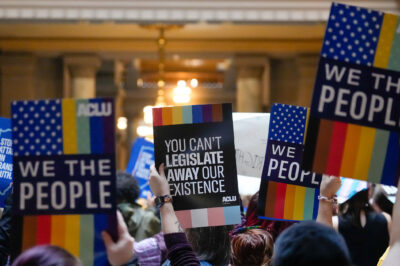Congress-ese: On Conference Committees and What Grade School Failed to Mention

In grade school, we are taught that a bill becomes a law after passage by both houses of Congress and once signed by the president. Straightforward, right? Not quite. If the House and Senate pass different versions of the same bill, the differences must be reconciled into one that the president then either signs or vetoes. This process plays itself out in conference committees appointed by the leadership of both houses to iron out differences between their respective pieces of legislation. When bills share policy goals, use the same actors, or envision similar budgets, coming to a consensus can sometimes be quite easy. However, when two pieces of legislation do not share these characteristics, this process becomes more complicated and, almost always, contentious.
The leadership on both parties in both houses of Congress appoint members to conference committees on a case-by-case basis. They’re often chaired and dominated by members from the committee that originally considered the bill, and the final legislative product reflects their priorities. But this isn’t a requirement — party leadership can help to tank a bill it disagrees with by specifically appointing members that do not reflect the will of the committee majority if it disagrees with their position.
This “smoky backroom” appointment process lends itself to a personality-driven style of legislating in which a variety of competing interests jockey for a place in the final legislative product. Behind the doors of a conference committee dramatic changes in proposed legislation can take place — provisions can be amended, added, or stripped altogether. All of these things have the capacity to alter the legislative intent and budgetary impact of the final bill.
Yet, the work of the conference committee, on even the most contentious matters, is rarely second-guessed by other members of Congress. When faced with the possibility of having to start over — with a new bill, hearing, mark-up, floor debate, AND conference committee — members oftentimes vote to accept the revisions and compromises from the conference committee. This process can hardly be reduced to a grade school flow chart, but in a system in which two bills must become one to become law, the conference committee has come to play an integral governmental role.
A good example of conference committee work was last year’s brouhaha over the inclusion of hate crimes legislation in the defense authorization bill. It was added by the Senate. It wasn’t in the House bill. When they conferenced it, certain Republican members threatened to blow the whole thing up if wasn’t taken out of the conference report. So guess what happened? See ya, hate crimes legislation!
(By the way, if you’re interested to see where your Congress members stood on hate crimes, see our Congressional scorecards for the House and Senate.)
CORRECTION: An earlier version of this post suggested that the ACLUscored the conference report. That was incorrect. The ACLU scorecards report on how membersvoted on hate crimes in the Senate on the Kennedy-Smith Amendment to the Defense Authorization Bill, and in the House on the Local Law Enforcement Hate Crimes Prevention Act.



